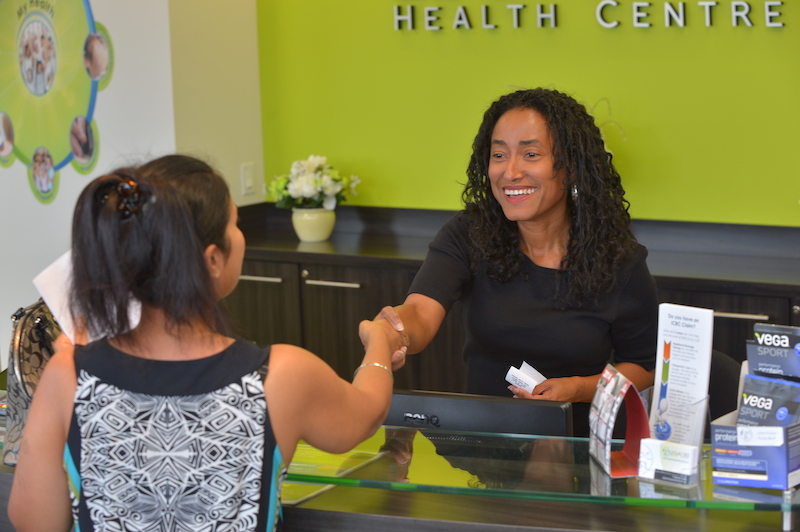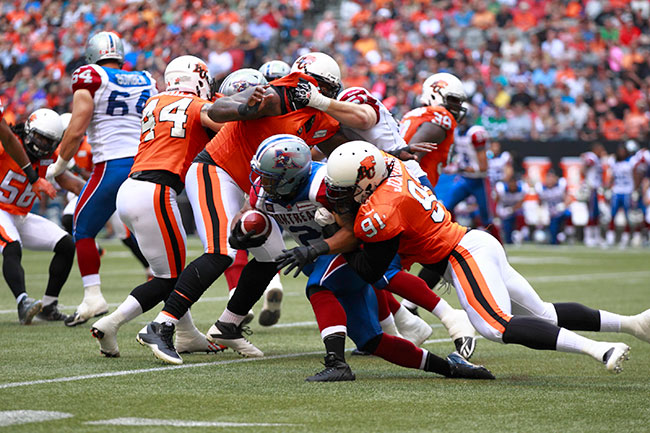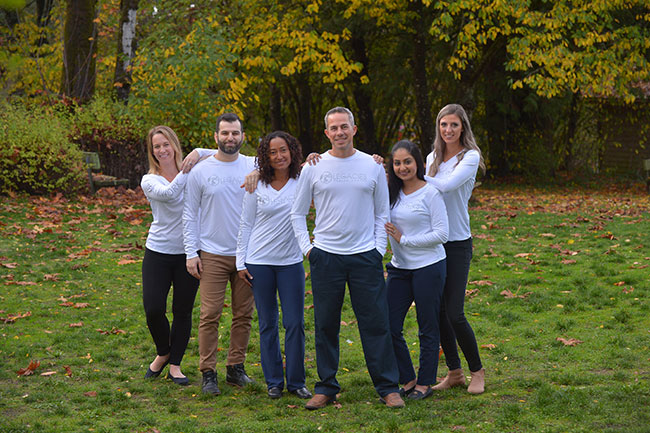
Features
Management
Operations
The everyday athlete: Getting patients better, faster by modelling care after athletics
June 24, 2019 By Massage Therapy Canada staff

After becoming a medical manager for the Vancouver Olympic Committee (VANOC) from 2006-2010, Matt Furlot realized something: Patients could get better care if healthcare clinics would treat them just like the professional athletes using an interdisciplinary approach to treatment.In fact, the International Olympic/Paralympic stated the medical services the recognized Furlot and his team for delivering the best care out of any other Olympic games.
It was this “interdisciplinary” idea that Legacies Health Centre was founded on in 2007. Furlot, the president, founder, and co-owner of Legacies Health Centre now has four clinics, located in North Surrey, South Surrey, Burnaby and North Vancouver in B.C. Individually the clinics see about 300 clients per day. There are plans to expand toCoquitlam, as well as to two other provinces: Alberta and Ontario. He must have found a niche that works: Furlot’s business has doubled in size every year for the last seven years.
Olympic-worthy care
Furlot’s athletic experience started before VANOC, where he worked with professional teams such as the NBA Vancouver Grizzlies, seven years with the MLS Vancouver Whitecaps and has served as the official practitioner with the CFL BC Lions since 2006. (RMTs who practice within the clinics are the official massage therapists of the B.C. Lions.) With his experience working with high-level teams and athletes, Furlot was keen to bring this interdisciplinary model to the masses.
“We have brought what used to be almost an exclusive interdisciplinary [ID] model that was in high-level sports and we brought it to the public. Once the public experienced it, they become super excited, tell their friends, and that contributes to our growth.”
Furlot says that the ID model is not just about bringing different disciplines together under one roof, but about getting everyone to work together and collaborate. So, while the typical multidisciplinary clinic may have the same professions Legacies employs, they may not necessarily work as an integrated team.
“Not to say that you can’t have a team-minded person in a multidisciplinary clinic, but in our ID model, one of the differences is that everybody in our centres are collaborating, sharing ideas, with a shared focus of getting the patient better, faster. Just like on a high-level sports team, we collaborate and work together to get top performance,” Furlot says.
However, Furlot makes it clear that this interdisciplinary model doesn’t necessary mean patients are seeing every single profession in the building. (There are times when a patient will only need massage therapy, for instance.)
Finding the right people
For this interdisciplinary approach to work, Furlot is adamant finding the right team-minded employees are necessary.
“Essentially we have to hire people that want to be part of a team, collaborate and understand that when we share ideas and work together, then I can achieve more than if I was working alone,” he says. “We’re looking for people that realize it’s OK if they don’t know all the answers but that we are surrounded by brilliance and all we need to do is ask. We go to work everyday and with amazing people who have incredible depth and their own knowledge to share.”
To find the right candidates, there is a lengthy interview process that can take up to two weeks, and involves an application form, and first- and second-round interviews. Interviews are focused on communication, interpersonal skills, teamwork, and potential candidates are asked to create scenarios that involve collaboration.
The core values of Legacies are always top-of-mind for the hiring process, but always come up in day-to-day practice. The values are: teamwork, excellence, compassion, communication and integrity.
“We can’t bring people onto the team who are competitive in the sense that they want to hold the patients to themselves, or are scared to refer because they might lose a patient – all these things can exist in multidisciplinary clinics, but not on our team in the ID model.”
The clinic design is another part of the formula for a successful work environment and ID model and there were key design elements for the physical clinical space that needed to be included. Furlot used a combination of his own experience working with high-level athletes, and taking notes from visiting other teams (like the Manchester United medical room) as well as looking at what other Olympic Games had done prior to the 2010 games.
While typical MD clinics will have each practitioner in their own room, Furlot says since everyone works in their own little “units,” there’s a big lack of communication between the HCPs involved: “You have all the disciplines there, but it’s not always a ‘team.’”
Legacies employs a clinic design that forces people to “bump into each other” to share ideas. Furlot likens it to a bicycle wheel: the hub of the clinic is the centre of the clincic. All the modalities (hand-wash station, supplies) are there. The treatment spaces are connected to this hub; with the various professions mixed around the office: A massage therapist beside a chiropractor, who is beside an ND, etc.
“When practitioners come out and go to grab something, they see a teammate and talk about their patient – they start collaborating. What we’ve done is we’ve taken those two elements: the design and the right person – it’s a big secret of our success,” Furlot says.
Celebrating every profession
The rise of multidisciplinary clinics was a response to the information age: the public can now Google their symptoms and find a range of professions who could help them. It now made business sense for clinic owners to employ a range of professions. Not to mention that insurance claims will likely cover a multitude of these HCPs.
Furlot says part of this patient interest into multi- or interdisciplinary models is thanks in part to the rise of both the media and Internet.
“Twenty years ago the patient would follow their doctor’s advice. If the doctor told the patient to go see a chiro, the patient would go see a chiro. There wasn’t that much searching on behalf of the patient in terms of what to do to get better.”
Legacies Health Centres also share close relationships with MDs in their respective areas. One of the clinics receives referrals from over 300 doctors in the area alone. Furlot says it’s important to build trust with doctors in your surrounding communities.
“There are a few different platforms you want to build trust on. One is with your team – your staff – then your client, and then you want to build trust with the people referring these clients (who are often MDs),” he says. “We do it the old fashioned way. We take the time to go around and meet with the physicians in the community. Whether it’s a doctors office, walk-in clinics, or putting on presentations at our own office.” His team is always sure to follow-up and visit a minimum of every six months.
Although Matt is no longer a practising RMT, he still supports the profession and his other employees by providing continuing education in the comfort of their own office, and credits the massage therapy as helping him get to where he is today – being an RMT meant he had to be open- and team-minded right from the very beginning.
“When we collaborate and share ideas, that’s how we get the patient better faster and that becomes our reputation,” Furlot says. “We are all the same: We have the fundamental goal to get the patient better – we just have different tools in our toolboxes.”
This article originally appeared in the Summer 2019 issue of Massage Therapy Canada
Print this page

